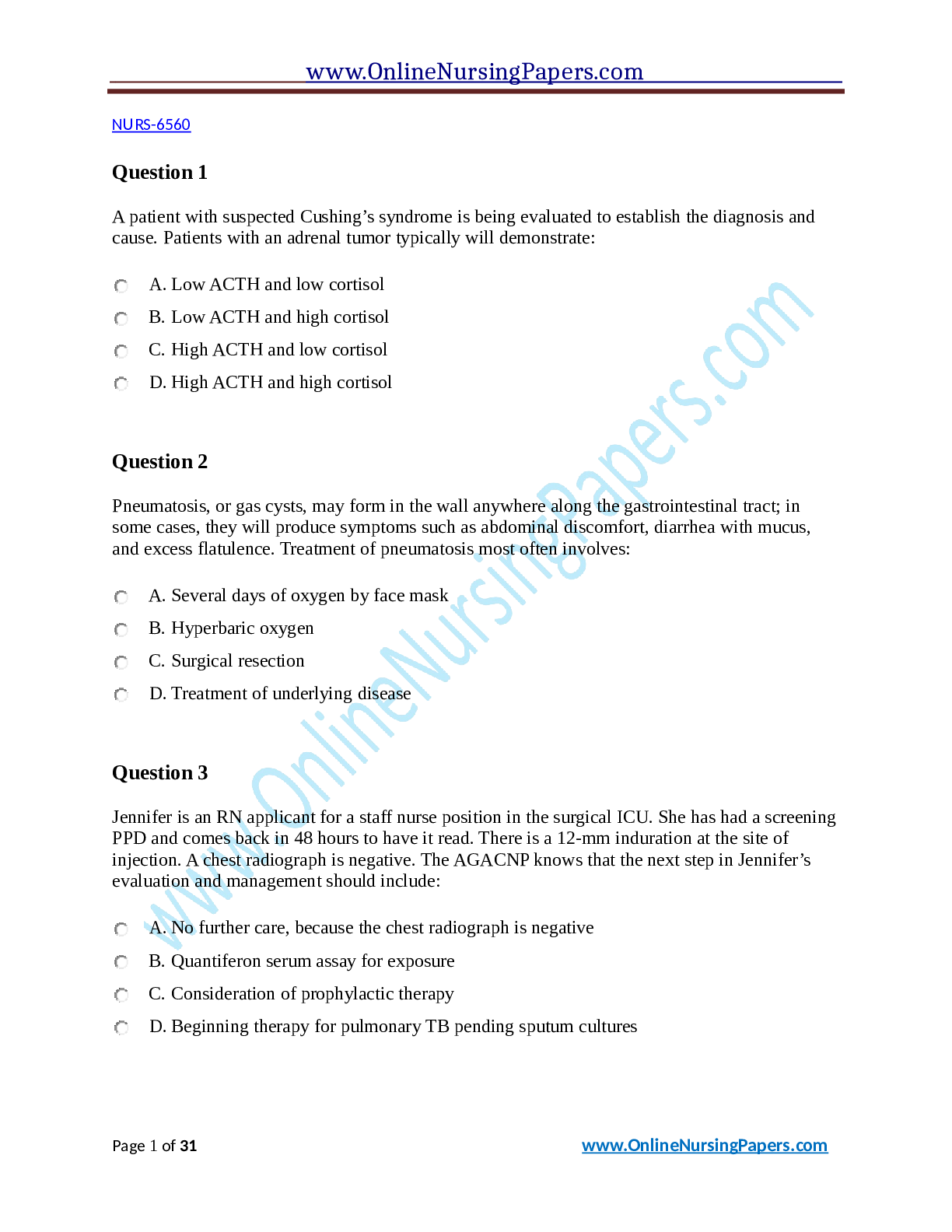NURS 6560 final exam(100 Questions)
Course
Project Management
Subject
Chemistry
Category
Exam
Pages
31
Uploaded By
ATIPROS
Preview 5 out of 31 Pages


Download all 31 pages for $ 6.08
Reviews (0)
$6.08
